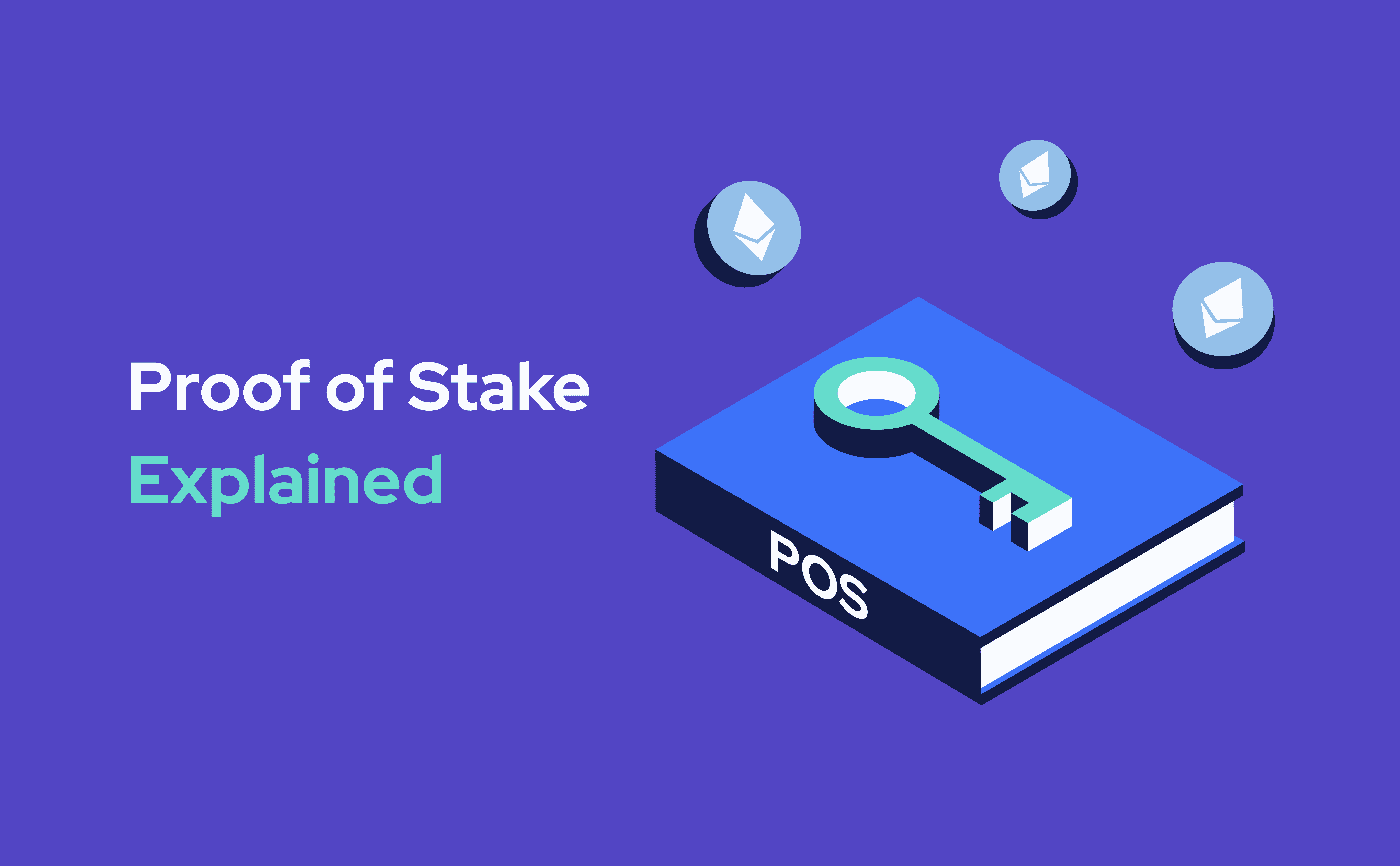Proof of Stake Explained
Understanding what Proof of Stake is and how it works is essential for anyone interested in cryptocurrencies. It is a form of transaction validation that has been around since 2012 and is becoming increasingly popular in the crypto world. Today we will share a quick guide to how it works, its pros, cons, and examples of cryptocurrencies that use it.

What is PoS?
For blockchain decentralization, there needs to be a way to validate transactions reliably and safely. One of these ways is called Proof of Stake, a cryptocurrency consensus mechanism for processing transactions and creating new blocks on a blockchain. With this validation system, owners of a particular cryptocurrency can stake their coins, allowing them to check new blocks of transactions and add them to the blockchain.
In 2012 Peercoin was the first cryptocurrency to use PoS; however, this validation method is now more relevant than ever. Proof of Stake is commonly used as an alternative to Proof of Work, the first consensus mechanism developed for cryptocurrencies, as it requires less energy. This makes it an environmentally friendly option of validation in a time when sustainability is becoming a high priority. Now, some of the most well-known cryptocurrencies use Proof of Stake as a validation method, such as Cardano (ADA), Tron (TRX), EOS (EOS), Tezos (XTC) and soon Ethereum (ETH).
How does it work?
Whereas in Proof of Work, the "work" refers to the work miners need to put into validating transactions, the most important part of Proof of Stake is the "stake". Here the users, or nodes, of the network stake, or lock-up, set amounts of cryptocurrency in a smart contract on the blockchain for a period of time, and in exchange, they get a chance to become a validator of new transactions and earn rewards.
One significant difference between validation in PoW and PoS is that the latter works in a sort of lottery principle. The validators are chosen randomly to validate the block, whereas, in PoW, all miners can compete and try to be the first to validate a block. The more tokens that the validator stakes, the better the chance of being chosen to validate the block.
When a new block of transactions is awaiting validation, the cryptocurrency's proof-of-stake protocol chooses a validator to review it. The validator checks if the transactions in the block are correct; if they are, the validator can add the block to the blockchain. By doing this, the validation node receives crypto rewards for its contribution. However, if the validator validates bad or fraudulent data, they can lose some or all of their stake as a penalty. The validator nodes receive the block rewards in the form of the native token of the network.
The number of tokens needed to become a validator varies according to the network. For example, Ethereum will require 32 ETH to be staked before a user can become a validator after the network switches the validation method from PoW to PoS. Blocks are also always validated by more than one validator, and when a specific number of the validators verify the block, it can be added to the blockchain.
Challenges and Advantages
It is quite easy to become a validator in the Proof of Stake consensus mechanism. All you need is to stake a certain amount of the cryptocurrency you want to become a validator for, and you're all set. In contrast, Proof of Work, the other popular consensus mechanism, requires their version of validators, called miners, to invest in processing equipment and sustain heavy energy consumption to power the machines that help solve the verification computations. This energy efficiency is why PoS blockchains often have more scalability.
Proof of Stake also contributes to better decentralization. This is because of the so-called "mining pools" which are synonymous with Proof of Work. These mining pools are collaborative groups of cryptocurrency miners who combine their computational resources over a network. These mining pools are essentially eliminating competition and cornering the mining market as small and independent miners cannot keep up with the high cost of mining. This PoW phenomenon results in centralization and control of validations by big players that can end up controlling most of the network. In contrast, Proof of Stake currently does not face this problem due to its lower cost and easier accessibility to independent validators, which increases the decentralization of the network.
The "nothing-at-stake" problem is one that critics of the proof-of-stake consensus mechanisms highlight constantly. This problem refers to the fact that validator nodes can validate conflicting copies of the blockchain because there might be minimal losses for doing so. This can happen because of a malicious action or accidentally when two validators propose blocks simultaneously. This problem can occur when a protocol forks as validators can start creating blocks on both networks, which can lead to double-spending, where a digital token can be spent more than once.
In conclusion…
First having been used in 2012, this consensus mechanism has withstood the test of time. Some of the most popular cryptocurrencies rely on this validation method to validate information and process transactions. The whole system is based on staking your own cryptocurrencies in exchange for the chance to be chosen to become a validator. And even though this consensus mechanism is greener, more scalable and has a higher probability of maintaining decentralization than Proof of Work, it too has its weaknesses.